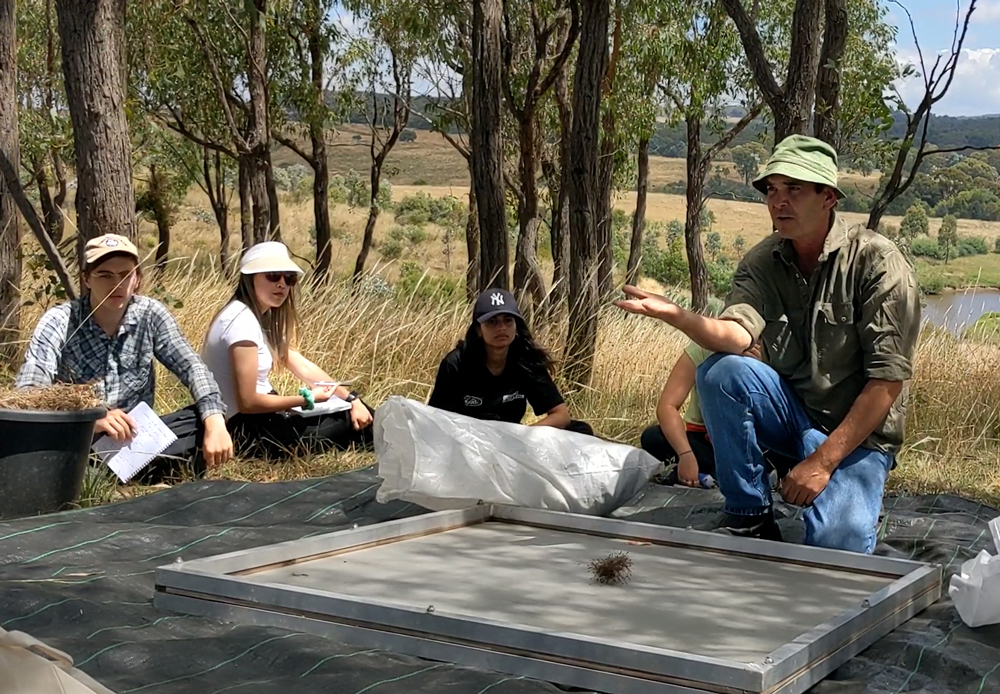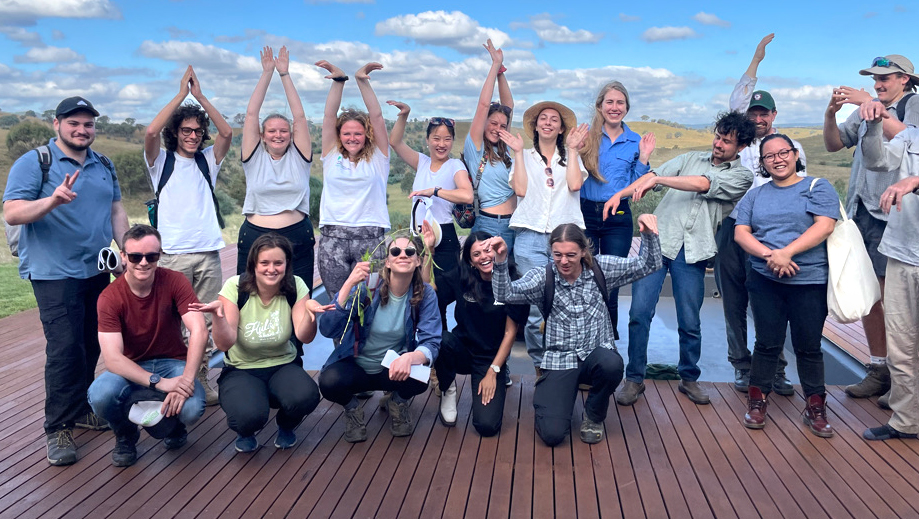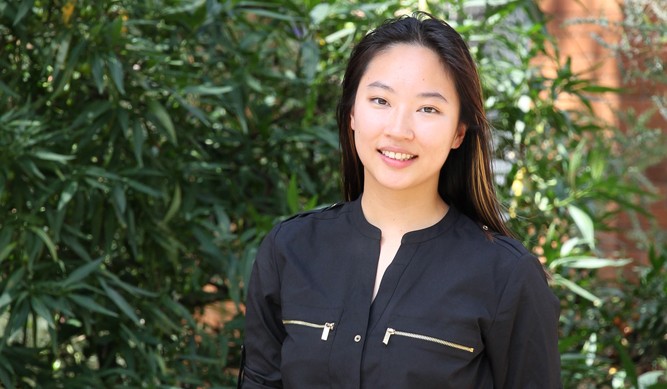Patricia Wang-Zhao enrolled in every Humanitarian Engineering course that she could fit in her schedule, and even tutored some of them.
So, it came as a surprise to some when she accepted a graduate role at Westpac. “I did make a slightly rogue decision,” she said. “At the moment I don’t know where exactly I will go with my career, but I am really interested in how the renewables transition will play out and the new market dynamics that have emerged because of it.” Patricia said she applied for the Westpac position knowing that the financial sector sees renewable energy as a pillar for investment and economic growth.
She hopes that her experience at Westpac will prepare her to enter the renewables industry at a tech entrepreneur, with a humanitarian focus.

New gig, new appreciation
Patricia graduated from ANU in December 2023 with a double degree in Engineering (Honours) and Economics, then made the move to Sydney in February 2024 to start her new job.
“I have been living in Canberra since I was 8, so Sydney is a bit big for me,” she said. But her transition into the world of international finance has been smoother than she expected. Four of the ten people in her Westpac cohort have Engineering degrees, and she reckons a third of the people she has encountered have engineering backgrounds.
Four of the ten people in her Westpac cohort have Engineering degrees, and she reckons a third of the people she has encountered have engineering backgrounds.
Working in the financial industry has given her a deeper appreciation for the education she received at the ANU College of Engineering, Computing & Cybernetics (CECC). “I loved the project-based learning that was embedded throughout the program especially in my mechatronics major. It let me learn by exploring and trying things for myself rather than just through lectures and theory,” she said.
Her internships as part of CECC’s work-integrated learning program were with Lintek Pty Ltd, where she served as a Research and Development Engineer, and CEA Technologies, where she worked as a Hardware Design Engineer. She was elated when her employer put a technology she had designed and built into industry practice.
“It was the first time I felt like I was truly an engineer and not just an engineering student,” she said.
“I feel like my exposure to Systems Engineering at ANU and my work experience in engineering spaces has prepared me to adapt to all sorts of different work contexts,” she said.
“I feel like my exposure to Systems Engineering at ANU and my work experience in engineering spaces has prepared me to adapt to all sorts of different work contexts.”
Many of her courses and group projects at CECC required coding, which allowed her to hit the ground running at Westpac.
“I’ve worked on a project where I coded up a simple machine learning tool to summarise and aggregate large volumes of text to support our economics team,” she said. “I might also get involved in projects that model different market dynamics and trading behaviours which is actually a pretty similar concept to what I’ve done before in my mechatronics speciality.”
Patricia’s Honours research focused on integrating rooftop solar energy into the electricity grid. Her advisor, Associate Professor Marnie Shaw, is an expert on the intersection of technology and industry.
“I am not at all surprised that Patricia chose Westpac,” Assoc Prof Shaw said. “She loves a challenge and she’s also very strategic. She knew that the finance and economics training at Westpac, on top of her double degree, would give her unique skills to be able to tackle complex projects.”
Humans, always on my mind
The Systems Engineering program at ANU offers students a selection of authentic projects with real-world clients in various industry hubs including Aerospace, Agri-technology, Energy Transitions, and Humanitarian Engineering.
“I almost always chose the Humanitarian Engineering topic.” Patricia said.
“I really valued that we knew exactly who we were building things for, and how it made a difference in their lives. Whereas in traditional engineering, for instance electrical, we didn’t necessarily learn who would use the technology we designed.”
Because of her double degree, she didn’t have room in her schedule for CECC’s Humanitarian Engineering minor. But she made up for that in her work with Engineers Without Borders (EWB) where she served as Vice-President of the ACT chapter for three years.

“I think humanitarian engineering will always be there in my mind as I go forward in life,” she said. “I credit [Assoc Prof Jeremy Smith] with having a strong influence on me as an engineer and how I think about problems.”
The Humanitarian Design Summit, a partnership with EWB, has sent 1,500 engineering students to developing nations in the Asia-Pacific.
Patricia was looking forward to traveling to Cambodia or Timor Leste when the global pandemic prevented her and her classmates from leaving Australia.
So, she helped conceive, organise and administer an Indigenous engineering summit on Ngunnawal and Ngambri land, focusing on design challenges in land regeneration and the native grains industry.

“I had a fantastic study experience at the ANU,” Patricia said. “I had access to brilliant and knowledgeable teachers who were incredibly supportive as well as a diverse cohort of peers with whom I’ve made lifelong friends.”
Patricia feels the Systems Engineering program served her particularly well because it gave her opportunities to try on different hats as she followed her interests and explored, something she continues to do today.
“Engineering goes beyond just math and physics; it’s fundamentally problem solving in various different contexts,” she said. “So, if you like problem solving and understanding how things work, you will find the right path at ANU, even if you’re not yet sure what discipline of engineering you want to specialise in.”
More about engineering at ANU:

